There are all shapes, colors, and sizes of rabbits, and though technically any bunny can be an indoor rabbit, some are more suitable for the great indoors than others — usually, the smaller ones.
And just like dog lovers have the quintessential teacup Yorkie, rabbit aficionados have their own tiny snuggle bunnies to adore and shower with affection.
Some are slightly larger than others, some are more active; some are no bigger than the size of guinea pigs — you really do have your pick when it comes to choice! Some also make great indoor pets.
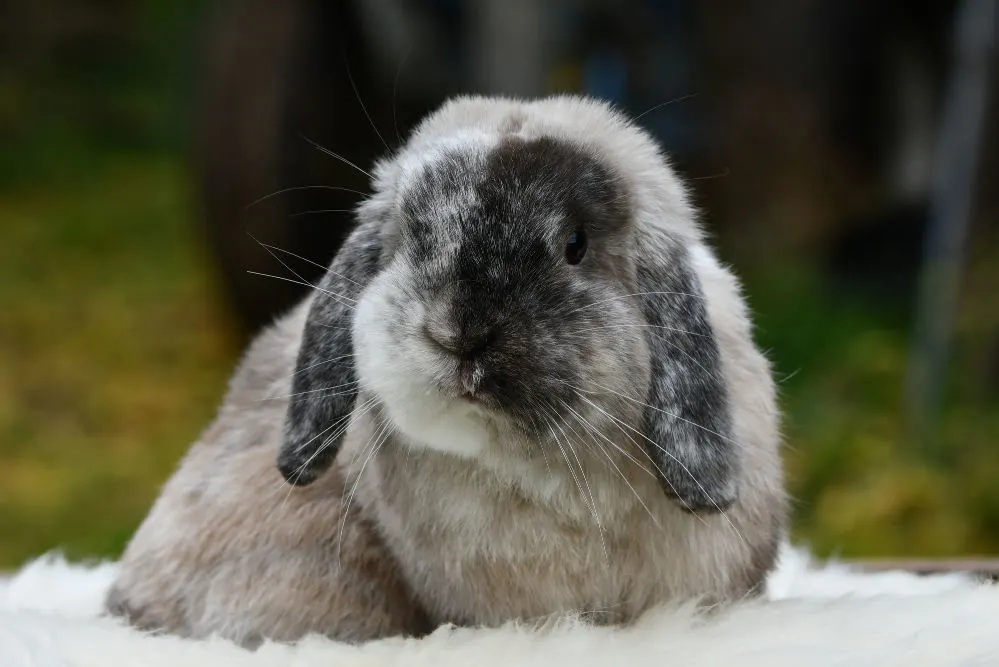
In this article, we’ll take a look at the best indoor rabbit breeds to settle down in your cozy home, as well as some of the requirements to cover their basic needs.
Best rabbit breeds for indoors
Smaller rabbits are easier to keep in the house, and depending on the breed of rabbit, these floppy-eared furries can get pretty small indeed — perfect to fit into your home. These are some of the most popular small rabbit breeds you can get.
1. Mini Lop
This uber-cute fluffball is the epitome of small, adorable rabbits. With its round furry body, long thick ears, and round face, you’ll have a hard time resisting hugging and petting them.
Which they won’t mind at all (just by the way). This breed might be small at 4.5 – 6 lbs (2 – 2.7 kgs), but they love to cuddle with their humans and get all the pets ever.
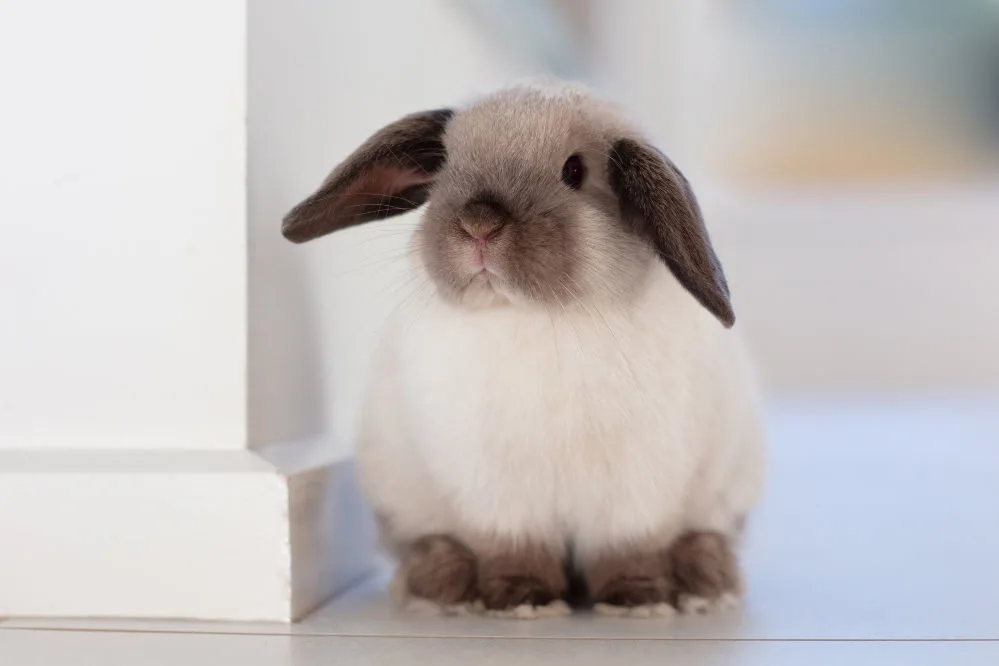
Cheerful and playful, they can be litter-trained easily and are very sociable with other pets. Children are fine with them too, as long as they’re calm.
Mini Lops are an intelligent breed and need mental stimulation, so plenty of toys and interaction is a must. They also love to run outside of their hutches, so remember to give them supervised exercise breaks.
They have a decent lifespan of five to ten years and don’t have any noticeable health concerns apart from the standard ones that rabbits of most breeds may experience.
The only downside perhaps is that you’ll have to keep an eye on their chewing inclinations as they’re stronger in this small breed, so keep them occupied with chew toys.
2. Holland Lop
Similar to the Mini Lop but even smaller is the Holland Lop, weighing in at a tiny 2 – 4 lbs (0.9 – 1.8 kgs). Clearly, Dutch dynamite comes in small packages though, as this dwarf breed is highly energetic and active.
Their large floppy ears make them look ultra-huggable, but they can prefer their personal space and may resist being picked up and even struggle.
This means they aren’t the best breed for families with young children who may not understand why Fluffy doesn’t want a cuddle. If you have them already, then just supervise playtime with the kids to ensure your furry friends don’t get stressed.
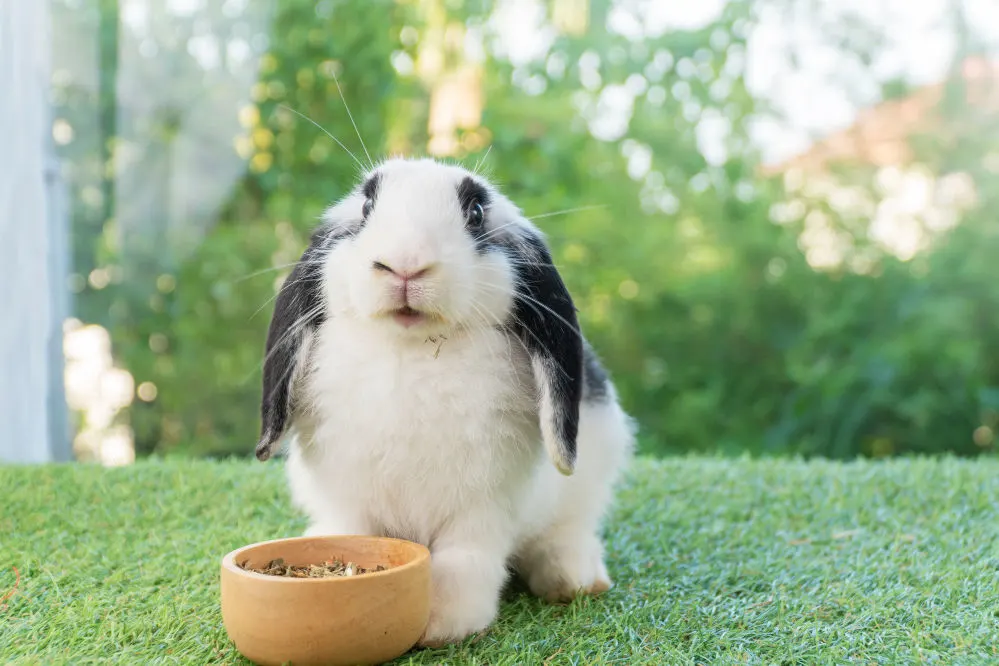
While this breed is generally healthy and lives an impressive seven to fourteen years, they can present problems when it comes to grooming. If you’re not a fan of heavily-shedding coats, you may turn your nose up at the big summer sheds this breed experiences and required brushing regime to keep the fur under control.
Their coats can vary from solid to broken coloring and they come in a variety of colors. It’s actually a popular show rabbit, having been recognized by the American Rabbit Breeders Association as far back as 1979.
3. Mini Rex
While other bunnies have the uber-cute fluff going for them, the Mini Rex has short, dense fur and the quintessential erect, tall rabbit ears and bright black eyes we all know and love.
Their backs are typically rounded with a strong set of shoulders and short necks, and they’re pretty calm — although if you hold them too tightly, they’ll squirm.
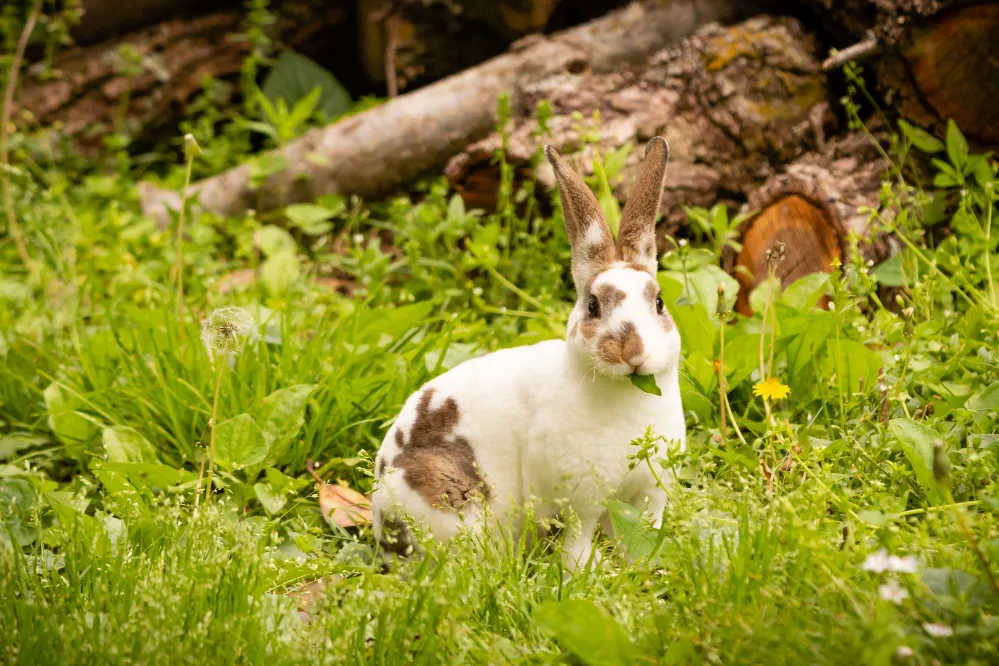
Thanks to this shorter fur, they don’t need as much grooming as most other breeds. They originally came from France in the late 1800s, and a recessive gene the breed carries causes their fur to stick up and outwards instead of lying flat. This means you can feel their soft, velvet undercoat when you stroke them.
They’re on the small side, reaching a maximum of 3.5 – 4.5 lbs (1.6 – 2 kgs) when grown, and they have a shorter lifespan of five to seven years.
But they’re incredibly friendly and classically shaped (plus there’s that bonus with the less grooming), making them a very popular breed in America.
4. Dutch rabbit
This fluffball hailing from Merry Old England is the Dutch Rabbit, with its distinctive black-and-white coloring and upright ears. You’ll certainly notice this small rabbit by its black ears and bottoms, and its white belly, front legs, shoulders, and wedge along the muzzle and between the eyes.
They’re very sociable bunnies who can get depressed if you leave them cooped up too long, even if they do have plenty of room in their living space.
In fact, they need to be able to run quite frequently, so having space for them to do so is important.
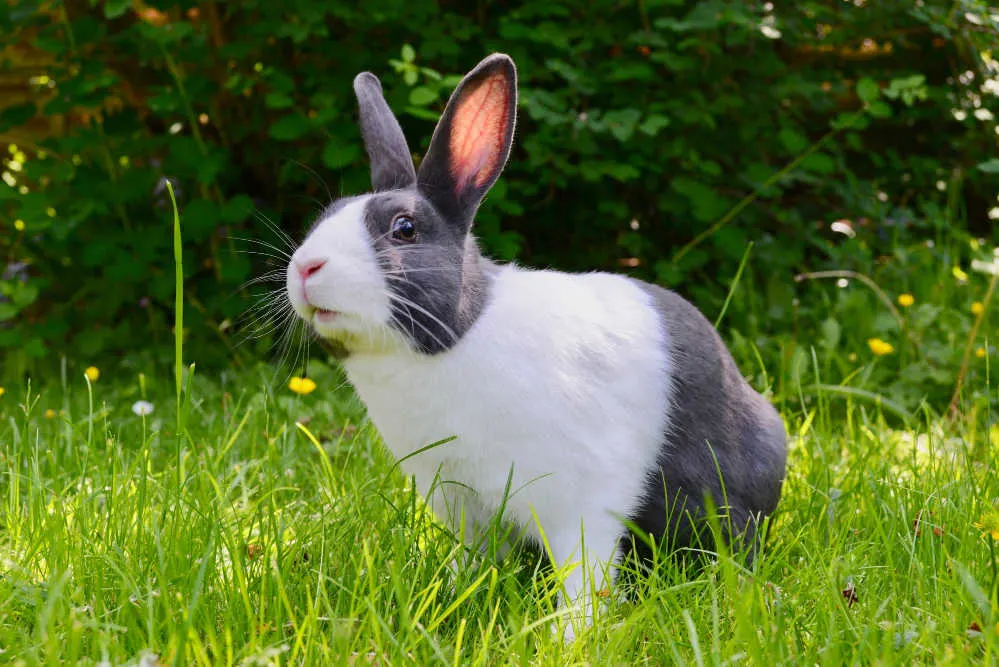
They also shed pretty heavily in the summer, thanks to that coat genetically built for cold British winters. But they’re super friendly with kids and dogs alike with no real congenital diseases to worry about. They’re also on the larger side, growing from 3.5 – 5.5 lbs (1.6 – 2.5 kgs), and live an average of five to eight years.
They’re a pleasantly calm breed and can easily cope with the chaos of being petted and hugged a lot by kids, so they’re a good fit for a young household.
5. Dwarf Hotot
Oh my stars, these little fluffs look unreal! Not only are they perfectly small, but they also have beautiful markings with an all-white coat and black spots on the ears and eyes.
Not only this, but they’re literal snuggle bunnies — they love being petted and held and require frequent human interaction.
The biggest problem is preventing these little guys from eating too much and becoming obese because it turns out they have a healthy appetite for something only 2.5 – 3.5 lbs (1.1 – 1.6 kgs).
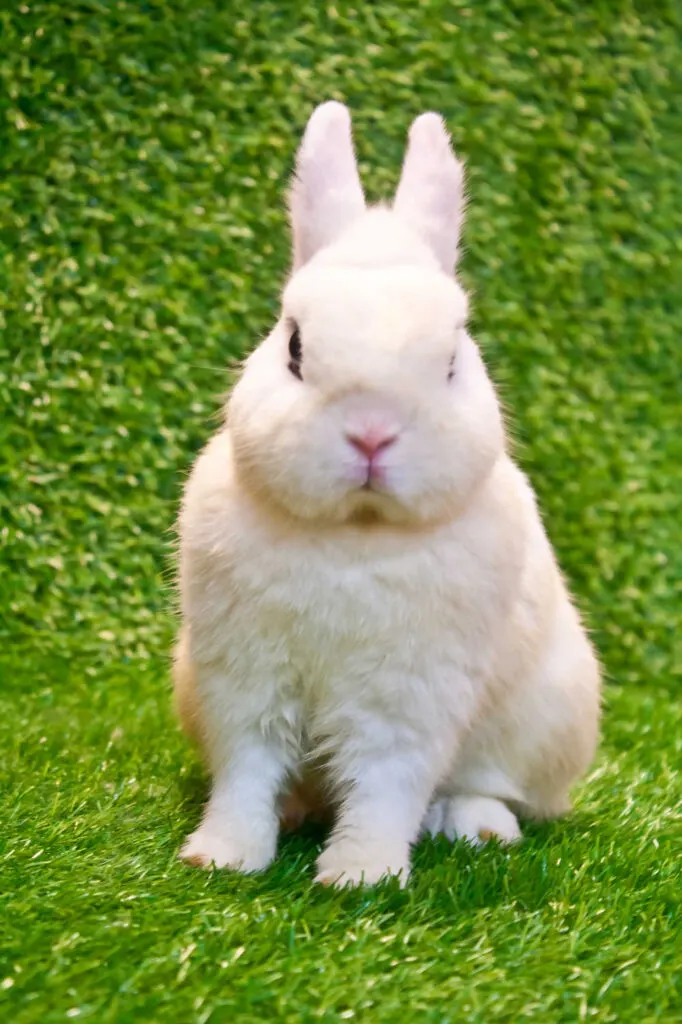
They’re mostly known for their unique coloring. The dark spots are typically black, although they can be chocolate too.
But they weren’t always a dwarf breed. The larger version was first bred for the distinctive coloring, and later they were bred smaller and smaller to be kept as pets, thus creating the Dwarf variety.
These super-cute bunnies are typically outgoing, although they can have little moody moments. They live a good seven to ten years, though, so that’s plenty of cuddle time ahead of you. Just be aware that they have a higher risk for malocclusion than normal, so vet visits on the regular are advised.
6. Mini Satin
They’re called a Satin for a reason — the coats of these short and rounded bunnies shimmer and shine like dappled sunlight. They can come in various colors and patterns, but they all share the shiny characteristic and are calm, rather gentle little furries, although they can be skittish around strangers.
Their soft, silky fur invites adoring petting and cuddling, just like their popular larger predecessors in 1956 when the satin gene was recognized for the first time. Afterward, breeders went about breeding them smaller and smaller until they reached 3 – 4.5 lbs (1.4 – 2 kgs) on average.
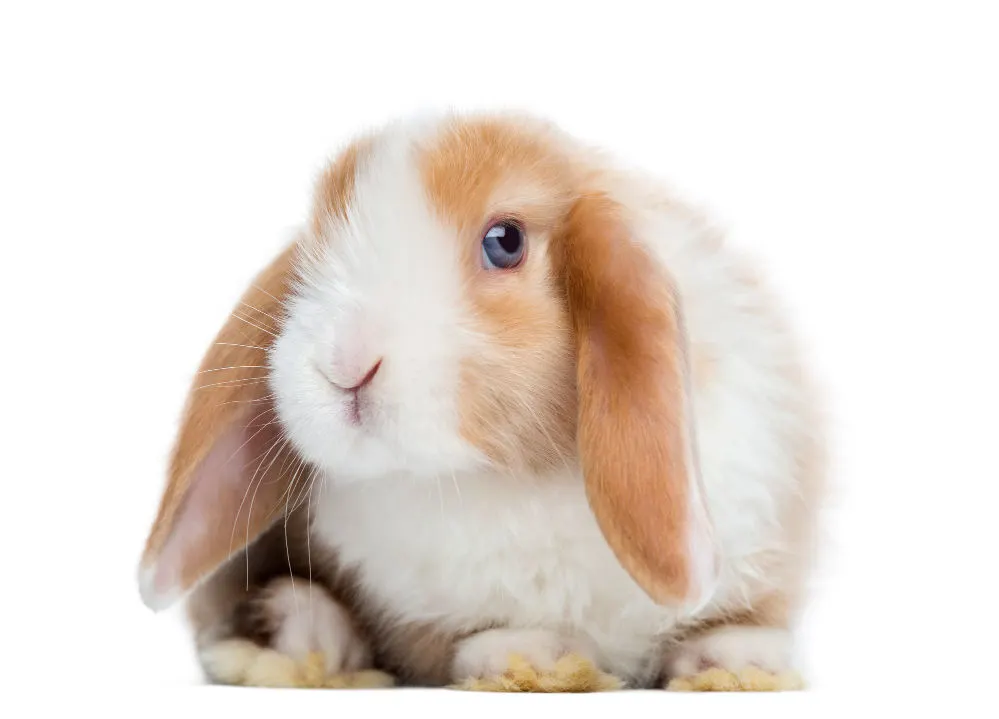
They can be a little skittish around kids who love to grasp and hold, but with time they can become accustomed to the handling. They aren’t generally ideal pets for homes with young children, though.
They’re perfect for small homes or apartments as they don’t need a lot of space thanks to a naturally lower level of activity. They don’t have any known health issues besides normal health concerns that any rabbit may experience, and their lifespan is about five to eight years.
7. Netherland Dwarf
These fluffy cuties are teeny-tiny, weighing an average of 1.1 – 2.5 lbs (0.5 – 1.1 kgs) with short little ears to match their stature. Understandably, they can be shy and skittish and aren’t really suited for handling by youngsters.
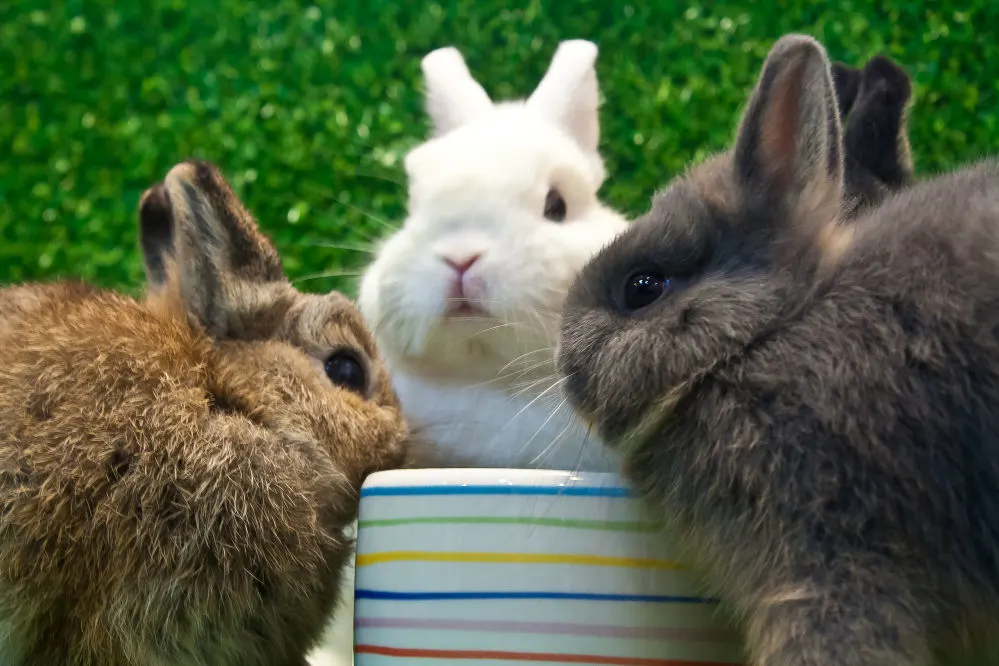
But they make fantastic companions to older humans, especially disabled adults thanks to their loving, sweet nature. As long as they feel stable and safe in your environment (preferably a quiet one), they’ll happily interact with you.
They might be teensy, but these little fellows need a lot of extra space to run around in for a good portion of the day, even if it is just your living room.
Keep an eye on those chompers, though, as these little guys are highly likely to develop malocclusion, and they live a good ten to twelve years.
8. American Fuzzy Lop rabbit
Another dwarf breed, the ultra-fluffy American Fuzzy Lop Rabbit has fuzzy ears and a long, wooly coat making them look like a hopping puffball. Who wouldn’t want to cuddle that for the next five to eight years? Luckily they’re extremely affectionate and love to play, either with toys or family members.
Curious, sweet-natured, and downright adorable, these little 3.5 – 4 lb (1.6 – 1.8 kg) guys will worm their way into your heart.
They don’t tend to suffer from health issues per se, but there is one issue that can come up thanks to their long wooly coats, namely Wool Block.
Rabbits groom themselves like cats by licking, but, unlike kitties, they don’t regurgitate any hairballs they may accrue. The Fuzzy Lop’s coat can cause blockages from hairballs that don’t get passed naturally, so keep an eye on your little guy to make sure they’re pooping properly.
Guinea pig owners have the same responsibilities regarding watching how much their piggies are pooping, so you’re not alone.
9. Lionhead rabbit
Now, these are some impressive bunnies! The Lionhead’s distinctive tufts of fur around their face and bottoms make them truly look like tiny, fluffy lions. They love to be cuddled and picked up; these energetic little balls of affection will keep you busy with all the love they have to share.
Unfortunately, they’ll also keep you busy grooming them. Those dramatic tufts need to be brushed, especially with their lively antics, otherwise matts and tangles can ensue — and no one wants a shaved rabbit.

Interestingly, they got their start in Belgium where a Netherland Dwarf was crossbred with a Swiss Fox. The resultant genetic mutation created the Lionhead, which people started calling the “mane gene”. It was only accepted into the American Rabbit Breeders Association as recently as 2014.
They typically weigh 2.5 – 3.5 lbs (1.1 – 1.6 kgs) and live an average of seven to ten years. They make fantastic, friendly pets, so don’t be shy about choosing a mini lion to be your companion.
10. Himalayan rabbit
This white-and-black cutie has a signature look to its nose that bunny lovers can’t resist. Typically its fur is white, short, and flyback, and it has dark colorings on its ears, feet, and tail. The nose, though, has an adorable little egg-shaped mark on it.
They’re one of the oldest breeds around, so old that their true origins are lost to time for the most part. The only thing we know for sure about them is that they made their debut in America in the early 1900s.

They’re patient, calm little critters with a sensitivity to the cold when they’re babies, but they do grow out of it and from there become very easy to care for. This makes them great with kids as they put up serenely with the raucous chatter and pettings. As you can imagine, they’re a super popular choice for a pet as a result of their calm and tolerant nature.
They’re still quite small, clocking in between 2.5 – 5 lbs (1.1 – 2.2 kgs), and they have a lifespan of five to eight years.
11. Polish rabbit
This little dwarf breed is actually best kept indoors. The Polish Rabbit has short, soft fur and comes in six distinctive color patterns or markings: blue-eyed white, ruby-eyed white, black, chocolate, blue, and broken pattern.
They’re real sweethearts with hearts twice as big as their 2.5 – 3.5 lb (1.1 – 1.6 kg) size, cuddly and affectionate to a fault. They’re also very calm and not very active, so thanks to their small size they’ll hop around their enclosures happily without getting the blues.
The bucks tend to be especially laidback. If you don’t have a lot of space to designate to an enclosure, then this is definitely the breed for you. Plus they’re good at learning how to use a litterbox — always a plus for an indoor pet.
They live an average of five to six years. Just be careful not to drop these tiny bunnies when you’re handling them.
12. Harlequin rabbit
If you have a larger home, you can pick a larger bunny to run around it. One of the bigger indoor rabbits is the Harlequin Rabbit. It’s a medium-sized breed that’s about 6.5 – 9.5 lbs (2.9 – 4.3 kgs) with a very distinctive coat.
The markings are usually bands or bars, or even a combination of both, and the colors can range across a wide variety, making some stunning bunny beauties.

What’s so special about that, you might ask? Well, it means that often these beauties have a half-and-half face color pattern, with one side one color and the other side another.
They were originally known as the Japanese Rabbit and were showcased in France in the 1880s. During the world wars, the breed got renamed and is still beloved thanks to that spectacular coat.
They’re a playful breed and curious with a need for exercise, so don’t keep them penned up too much. They’re happiest with some space to run and some toys to keep them occupied. They don’t have any big health complaints luckily, but they do have a medium lifespan of five to eight years.
Best indoor rabbit hutches
House rabbits are typically smaller and don’t require cages as large as their bigger cousins, but they still need enough space to live comfortably. Just how much is that? Here’s all you need to know about what your pet bunny requires in an indoor cage.
Space requirements
As a pet owner, your number one priority is to ensure the comfort of your pet. That means making sure they have a lot of space, firstly, and secondly that it’s kept clean.
Many of the popular choices for indoor hutches offer seven and a half square feet of space for your bunny, but that’s on the smaller side, particularly for larger rabbits, and should be considered the minimum requirement. Eight square feet is a better amount of free space for your fluffy friend to frolic to their heart’s content.
If you have more than one bunny, you should typically double the amount of space per extra rabbit in the hutch. When it comes to a rabbit playpen for exercise outside of the cage, though, your bunny buddy will need about 24 square feet to really get their hop going if you plan to keep them confined.
The exercise pen should have nice long grass outdoors or a plush carpet if inside. If you’re lacking the latter, a good idea is to put down yoga mats or pieces of carpet to stop your little furries from getting foot sores on hard surfaces. One of the most important things about caring for rabbits is to allow for at least four hours of exercise time a day for a happy, healthy bun-bun.
Cage requirements
A nice deep nesting box or trough is essential for a peaceful sleep. While high-quality paper bedding is just dandy for these little critters, a bed of soft straw is a warm, comfy spoil you might want to invest in.
Hay is typical if you have an outdoor rabbit hutch, but for indoor ones, cotton towels, and fleece liners are perfect padding for their feet and absorb urine nicely.
A feeding tray or food bowl and water bottle are must-have items as well to round out their living quarters. So is a litter box or litter tray, if you’re training your bunny to use one as this will help with easy cleaning of their hutch. The best rabbit cages have a few enrichment and chew toys lying around to improve their inhabitants’ quality of life, too.

Cage materials
Typically wire-sided cages are the go-to as they provide great ventilation for your fluff. They also serve the purpose of preventing Flopsy from escaping and taking a joyride around the house.
Cages that use outer wood frames like this one can look very pretty or even chic when compared with your house decor. They’re the most popular kind to find, really. But bear in mind that wood is harder to disinfect, so if you see any wooden boards on the inside floor of the cage, it’s best to chuck them out.
Talking about floors, mesh floors or wire floors, while convenient for keeping the hutch and your pet clean, can cause pressure sores on their sensitive feet. If your hutch doesn’t have a solid floor, you can add yoga mat material or a towel to alleviate that discomfort.
Cage location
This matters more than you’d think. Sadly for your interior decorator, you can’t just plop their cage wherever fits in with your statement mirror and six-seater dining suite. You’re going to have to work your design around the best place for your bunny’s cage to be.
This would be out of any drafty or potentially damp areas (no basements, please) but have good ventilation. It should also avoid direct sunlight and preferably be somewhere you walk past often in the home so they can experience the joy of your presence frequently throughout the day.
Rabbits are social animals, and frequent daily interaction with them is easier if they’re on your regular household walking route. You won’t have any complaints using a pretty hutch with plenty of doors like this one, though.
Final thoughts on best indoor rabbits
Who would’ve thought such tiny cuties existed for us to cherish and adore? These little bunnies will hop into your heart and your home and give you years of happiness and affection. Luckily they don’t need a lot of living space, making them the perfect indoor rabbits for those who lack gardens or live in apartments.
Just remember to let them out of their cage for a run around the lounge or playpen daily to keep them healthy and promote a long, healthy life.
Although we had a look at the best indoor rabbits, there’s plenty more out there. Why not read about how many rabbit breeds there are?
Steph Dyson is a travel journalist by trade but a lover of all small pets. She’s been a pet mum to everything from gerbils to guinea pigs, rabbits to hamsters, and fish to dogs of all shapes and sizes. She wants to share her years of experience with small pets and make Small Pet Guides the go-to website for pet owners seeking information and care advice.

